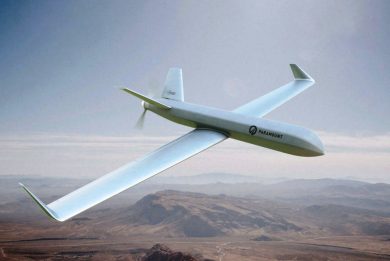
ADEX 2024 – Rosoboronexport presented the export version of the Lancet-E system abroad for the first time
At the ADEX-2024 exhibition, Rosoboronexport (part of the Rostec State Corporation) held the first presentation abroad of the export version of the Lancet-E unmanned aerial system (UAS).
EDR On-Line already wrote about the Lancet-E in its report on the Army-2024 exhibition, the system offered for export including the Z-16-E short-range reconnaissance unmanned aerial vehicle (UAV), two types of Lancet-E X-shaped loitering munitions, named Izdeliye-51E and Izdeliye-52E, a 51E pneumatic catapult, a ground control station (GCS), an antenna, a universal charging station with batteries for electric motors, replaceable payload modules (video cameras and thermal imagers), and a set of spare parts. No more details on the differences between the system used by Russia and that proposed to export were provided.

At the Baku exhibition Rosoboronexport presented videos showing the combat procedures of the Lancet-E UAS. After the launch, Z-16-E reconnaissance UAV with a range of up to 50 km flies over the area of interest, detects and designates the target which data are relayed to the GCS via data-link. Depending on the type of target and the range from the launch area, the loitering munition Izdeliye-51E with a range of up to 40 km or the Izdeliye-52E with a range of up to 25 km is launched. The munition is guided to the target by the operator in the GCS, the Lancet-E maintaining the man-in-the-loop. In the event of an attack on a mobile target that changes its location, the loitering munition is guided on the target exploiting the data provided in real time by the Z-16-E UAV through the data-link. In the final section of the trajectory, the GCS operator corrects the flight of the munition through a video camera or thermal imager installed in the nose compartment of the attack drone.
During the presentation, numerous video frames were shown of the destruction of targets of various types, including armored vehicles, fortifications, hangars, aircraft at airfields, radar stations, self-propelled artillery units, multiple launch rocket systems and surface boats. According to open data, as of September 2024, more than 2,300 ground targets were destroyed using Lancet loitering munitions, those missions having been saved thanks to the video recording equipment.
Photos courtesy N. Novichkov



